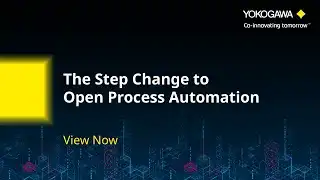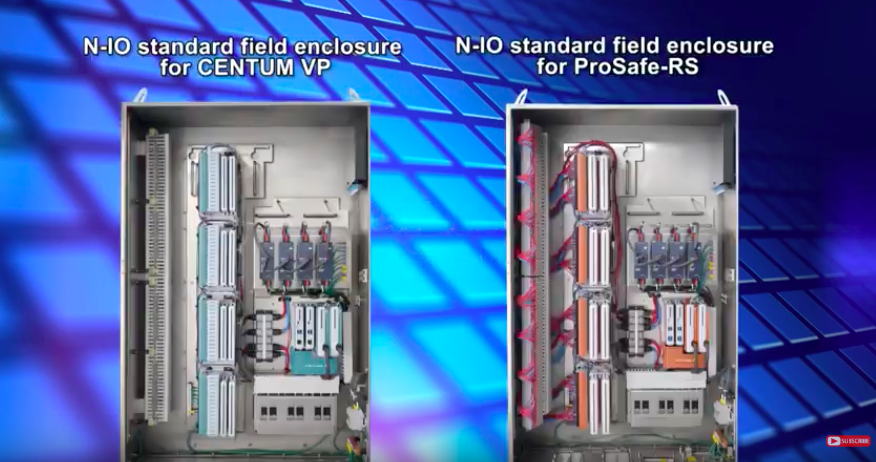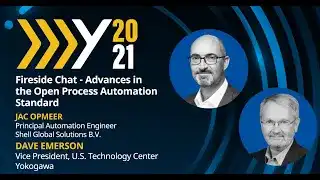The Case for Breaking Down Barriers and Enabling New Possibilities
The hum of the plant was a mix of musty determination and despair, its units pumping out products using systems that had seen better decades. In the cluttered control room, a single station failure turned this routine operation into a systems upgrade project that had become a frightening and costly nightmare – an urgent system modernization project. Without a budget or sufficient resources, the update would have a significant impact on the plant’s profitability, —months behind schedule and draining resources. A project meant to modernize the facility had spiraled into a logistical nightmare. The plant was trapped, shackled to a legacy architecture designed for another era.
"Today's automation systems are expensive to update and expand, difficult to integrate with new technologies, and often limited to a single supplier. Open Process Automation (OPA) is the technology platform solution that changes that."
"Today's automation systems are expensive to update, challenging to expand, and hard to integrate with new technologies, often locking users into a single supplier. Open Process Automation (OPA) offers a transformative platform to overcome these limitations."
- Mark Hammer
What Exactly is Open Process Automation (OPA)?
An OPA system is a software-defined control system that combines the benefits of traditional DCS systems with greater flexibility. Unlike single-vendor-locked systems, OPA allows you to design, operate, and expand your plants using interoperable software and hardware from multiple vendors. Applications and workloads are containerized, running seamlessly with an Open Process Communication Framework (OCF). OCF simplifies data integration from various sources, giving engineers to select best-of-breed applications and seamlessly integrate new technologies a clearer view and enabling faster decision-making.
The Open Process Automation Forum (OPAF) envisions a transformative process control architecture that is standards-based, open, secure, and interoperable. Its goals include:
- Providing access to leading-edge capabilities
- Enabling integration of best-in-class components
- Preserving application software for asset owners while reducing replacement costs
- Promoting innovation and driving value creation across industries
- Supporting diverse industries with a flexible, scalable approach
- Offering commercially available solutions from multiple suppliers
- Fostering inclusive collaboration between users and suppliers
- Establishing a framework for open systems architecture
Since 2017, Yokogawa has developed OPA standards. In 2019, it partnered with ExxonMobil and others to bring OPA from lab to field, culminating in the first OPA system running a chemical facility.
With decades of integration process controls experience, Yokogawa combines its OPA core software, OPA system enabling tools, and its system integration processes technologies to deliver results. OPA allows the use of components from multiple suppliers, offering clients best-in-class solutions.
Ready to explore how OPA can cut capital and operational expenses?
Discover How Our People, Technology & Solutions Can Drive Your Success
Talk to an Expert
Details
1. What is Open Process Automation (OPA)?
Rather than proprietary Distributed Control Systems (DCS) and Programmable Logic Controllers (PLCs) of today's factory automation strategies, open process automation is a new generation of process control that's open, secure, and interoperable. In short, OPA is a software-defined automation system, not tied to a specific hardware platform.
2. Who is behind OPA?
The Open Process Automation Forum was created in 2017 by End Users, under the Open Group to create the Open Process Automation Standard (OPA-S). It is a group of over 100 companies that have come together to create a standard of standards aimed at the next generation of controls focused on lowering Capital and Operational Costs.
3. What is the status of O-PAS standard?
The second version, 2.1, of O-PAS (The Open Group Open Process Automation Standard) has come out to help the chemical industry harness new digital tools such as artificial intelligence, machine learning, cloud computing, data analytics, and edge computing while working within system constraints such as:
- keeping human/machine interfaces and operational procedures usable by current and new workers
- aggressively implementing digital security
- never compromising operational safety
The technical components of the O-PAS Standard are as follows:
- Technical Architecture
- Security Aspects
- Profiles
- Connectivity Framework
- System Management
- Configuration Portability
- Physical Platform
- Application Portability
Version 3.X is under development and is focused on the system management and physical platform standards. Version 2.1 focuses on the connectivity framework and Security.
Resources
Industrial process automation has evolved significantly over the years, playing a pivotal role in improving operational efficiency, safety, cost reductions, and ensuring product quality. Traditional automation systems, however, often relied on proprietary, closed architectures, leading to vendor lock-in, interoperability challenges, and limited adaptability to changing business needs often required for enterprises to expand or progress. Industrial process automation has evolved significantly over the years, playing a pivotal role in improving operational efficiency, safety, cost reductions, and ensuring product quality.
In this Whitepaper by Mark Hammer you will learn about:
- The movement away from proprietary, closed architectures
- How OPA avoids vendor lock-in and interoperability challenges
- Changing business needs requiring flexible systems to progress
Hydrogen (H2) production through electrolysis has emerged as a key technology in the transition towards sustainable energy, especially when powered by renewable energy sources like wind, solar, and nuclear. However, optimizing this process for efficiency and cost-effectiveness requires integrating various components, packages, and control systems within hydrogen plants.
Videos
Open Process Automation Product Overview
Open up control. Open Process Automation (OPA) opens the door to expanded choices, leverage, and customization.
Create a scalable, sustainable architecture. Remove the restraints of proprietary systems. OPA enables you to leverage all available technologies to open up solutions. Explore the possibilities today.
Watch Video to learn more.
In this webinar, industry-leading experts will describe how OPAF is selecting standards that will achieve the vision of truly open systems, the status of its efforts, and what this exciting change to the process automation world means to you.
News
-
Press Release Jan 31, 2022 Yokogawa Selected as System Integrator for Open Process Automation Field Trial
- Collaboration on ExxonMobil project to advance OPA system from test bed to real-world production process facility -
-
Press Release Jul 8, 2019 Yokogawa to Establish Open Process Automation Test Bed for ExxonMobil
Looking for more information on our people, technology and solutions?
Contact Us








